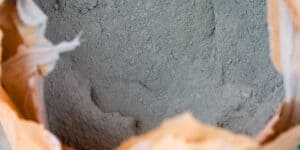Dr Soheil has been involved with the concrete industry since he was school-age, besides his extensive formal education and research experience. He is currently on a mission to encourage more use of concrete waterproofing admixtures for enhancing durability. Commonly used additives such as fly ash, slag, and silica fume have very limited impacts on improving the durability of concrete while compared to an effective integral waterproofing admixture. Dr Soheil discusses the inconsistencies between international waterproofing standards as well as the industry knowledge gap that finds waterproofing admixtures currently being used in only a narrow range of applications. He talks about the works being done at Chem Concrete and speaks of the advantage to the environment of making concrete’s service life longer for both new and existing structures.
Waterproofing Admixtures for Concrete Durability

Waterproofing Admixtures for Concrete Durability
Dr Soheil Jahandari, PhD
Chem Concrete – chemconcrete.com.au
Cement and Concrete Composites Journal https://www.sciencedirect.com/journal/cement-and-concrete-composites
Pfeiffer, M. Scali, “Concrete sealing for protection of bridge structures”, National Cooperative Highway Research Program (NCHRP 244), Transportation Research Board, Washington DC (1981).
G.C.o.R. Concrete, “Guidelines for the Protection and Repair of Concrete Components”, Part 3: Quality Assurance in Execution of the Works, 1991.
S. Jahandari, Z. Tao and M. A. Alim, “Effects of different integral hydrophobic admixtures on the properties of concrete”, CIA Conference 2021.
View the Transcript
BRENDAN: Well, welcome to the latest segment of the MARKHAM Invisible Strength podcast series, Next Level. I’m Brendan Stead from MARKHAM’s Bundaberg office and with us today is Dr Soheil Jahandari, Director of Chem Concrete. Soheil holds a PhD from Western Sydney University focusing on concrete waterproofing and durability. Welcome, Soheil, good to have you with us!
SOHEIL: Thank you, Brendan. I’m super happy to be here!
BRENDAN: I’m wondering if you could introduce yourself, Soheil. Give us a bit of your research and industry background. I think you’ve done a fairly extensive range of research in this area.
SOHEIL: Sure! I have a PhD degree focused on “concrete waterproofing and durability” from Western Sydney University, and I’m also working in the concrete industry for almost 15 years. I was born in a civil engineering family, where my father and brothers have been running a construction company, for now over, say, 30 years. So, almost from the age of 12, I have been working in the construction industry, and at that age, because I had no experience or degree in civil engineering, I started my work from scratch by mostly working during the public and school holidays as a concreting labourer. Then, at the age of almost 21, I got my bachelor’s degree in construction materials and three years after that I got my Master’s degree focused on “durability of concrete in exposure to groundwater”.
At the same time, I established my own concrete laboratory, which included everyday operation of some concrete testers, and I also managed to secure some research funds from a few governmental agencies to conduct research on “concrete durability in exposure to groundwater”. Then, because I was very passionate about concrete waterproofing and durability and had published some top journal articles and books on this topic, I got a full PhD scholarship offer from Western Sydney University; and once again, my PhD research was also focused on “integral waterproofing admixtures and concrete durability”.
So, during many years of research with a team of globally-renowned scientists and professors who are highly specialised in concrete waterproofing and durability, we successfully developed a low-cost and highly effective integral waterproofing admixture for concrete protection. And, with five well-known Full Professors and eight Assistant Professors and some engineers, we established Chem Concrete; and since then, we are working on the development, manufacturing, and supplying of integral waterproofing admixtures for concrete protection.
At Chem Concrete Laboratory, we’re also doing some research projects on further development of integral waterproofing admixtures, as well as doing “concrete quality control” and “concrete testing” for a few ready-mix concrete suppliers, a few precast concrete factories, and some construction companies. At Chem Concrete, we’re also providing on-site supervision and consultancy for a few special projects where their concrete is exposed to extremely harsh environments.
BRENDAN: That’s interesting. That’s good to hear you’ve being involved in the industry for so much of your life; shows a lot of experience. I guess a lot of practical experience as much as classroom, you might say. Can you tell us what are the benefits of waterproofing admixtures and different methods of developing a waterproof concrete? I guess, as opposed to waterproofing it afterwards, if you know what I mean.
SOHEIL: Sure, sure. So, we all know that ingress of water and aggressive liquids is the main reason responsible for say over 90% of the physical and chemical degradation of concrete structures and concrete pavements. This ingress of water shortens the life span of concrete and results in an annual cost of billions of dollars to those asset owners and to the national economies.
The two main approaches followed to provide a water resistant concrete are integral waterproofing and surface protection. The use of integral waterproofing admixtures has several benefits over surface protection, because the integrally waterproof concrete is not vulnerable to deterioration. It doesn’t require regular maintenance or re-application. It can be used where surface protection is too complex or impossible to apply like concrete piles, and also integral waterproofing doesn’t result in any additional application costs. The application is very easy and doesn’t include any labour work since it turns the concrete itself into a water barrier.
In general, these integral waterproofing admixtures are classified into four main groups. The first group is water repellent, also known as hydrophobic admixtures, which are suitable for some applications where concrete is not exposed to hydrostatic water pressure like concrete pavements. The second group is densifiers such as supplementary cementitious materials and non-chemicals. These densifiers refine the pore size distribution of concrete and densify the concrete matrix, but those hydrophobic admixtures change the surface tension within cracks and pores to raise the liquid contact angle and thereby resisting absorption. The most widely used densifiers are supplementary cementitious materials such as fly ash, slag, and silica fume. And, the effectiveness of these densifiers in reducing the water absorption rate of concrete is very limited; and it’s proven that they can’t reduce the water absorption by over 20%. That’s why the concrete developed by adding supplementary cementitious materials shouldn’t be recognised as waterproof concrete – not only in my opinion, but also based on the definitions of waterproof concrete. The third group is crystalline admixtures. A well-designed or engineered crystalline admixtures should increase the concrete resistance against water penetration by pore blocking arising from solids depositions through the chemical reactions. The last group is hybrid admixtures. Our Chem Concrete integral waterproofing admixture is classified as a hybrid waterproofing admixture, which means that almost all the mechanisms of waterproofing, such as densifiers, water repellent chemicals, expanding agents which act as a pore blocker, nano technology, etc., are used in the production process and to the best of our knowledge, this is the only commercial admixture where some low-cost chemicals with different waterproofing mechanisms are used.
BRENDAN: Yes, I see. That’s very comprehensive. I hadn’t thought about breaking them into four groups in that way. I find that very helpful.
And what would you say the issues or limitations around the current waterproofing industry or the conventional approaches? And, reasons why the industry should be considering shifting to admixtures? – If that’s the right way to express it.
SOHEIL: Yes, sure. You know, like every other industry, there are many issues and limitations in integral waterproofing admixtures and waterproof concrete. The first issue is that there is no a globally or generally accepted definition for integral waterproof concrete. The German Committee on Reinforced Concrete defines waterproof concrete as a concrete with a water absorption rate reduced by more than 50% in comparison to the untreated concrete. Then, according to the National Cooperative Highway Research Program in the US, the water absorption rate of waterproof concrete should be less than 2.5%. In British Standard, it’s mentioned that waterproof concrete should have the ability to prevent moisture movement from one place to another.
So far, what’s clear is that waterproof concrete should have a very low water absorption rate and permeability.
Another important issue is that the current standards and guidelines on the durability design of concrete structures have paid little, or in some cases no attention, to the benefits of integral waterproofing admixtures. In research, it’s very well proven that a good waterproofing admixture can significantly improve the durability and service life of concrete in any harsh environments, such as exposure to seawater, rainwater, chloride, acid, sulphates, salt, freezing-thawing, ASR, reinforcement corrosion, etc. In Australian durability design standards like AS3600 or AS5100 and so on, too much emphasis is put on using fly ash, slag and silica fume, which have very limited impact on improving the durability when compared to an effective integral waterproofing admixture.
You know, the idea is very simple. The ingress of water and corrosive chemicals is the most important reason responsible for shortening the durability and lifespan of concrete. So, waterproofing admixtures are in fact durability improving admixtures.
Another important issue is that in the market, the effectiveness of commercial waterproofing admixtures varies significantly, ranging from ineffective to highly effective admixtures. And again, I think this issue might have originated from the standards. Imagine that in almost every concreting site we prepare many samples in those cylinders to do the compression testing to make sure that the visible strength of concrete meets that designed MPa. But, from the concrete treated by integral waterproofing admixtures, we never prepare a sample to do a simple water absorption test or permeability, or rapid chloride permeability test to make sure that the admixture is effective in terms of reducing the water absorption of concrete and improving its durability. So, I hope to see this considered in the next revisions of the standards.
The third issue could be the lack of a good knowledge among some engineers about the applications of integral waterproofing admixtures. We still meet some design engineers who think that waterproofing admixtures are only suitable for application in concrete water tanks, concrete basements, or bridge decks in those coastal environments; and that’s why they only propose the use of waterproofing admixtures in such limited applications. But in reality, waterproofing admixture should be used any concrete structure or pavement where the concrete can be exposed to water, and it doesn’t matter if it’s regular rainwater or highly humid environments.
For example, I believe that the best method to improve the durability and extend the lifespan of a concrete pavement is to use an effective integral waterproofing or hydrophobic admixture. But in practice, we almost never see the regular application of these admixtures in concrete pavements or concrete road barriers or concrete kerbs, concrete pipelines, driveways, etc. And, this is while the most important reasons responsible for the degradation of concrete in these applications is rainwater, acidic rain, freezing-thawing and ASR. That’s why, currently, waterproofing admixtures are being used in a very small portion of concrete being poured all around the world or in Australia. But a huge portion of this poured concrete is or will be exposed to water and aggressive liquids during its service life.
So, I’m hoping to see folks considering to use more and more waterproofing admixtures in the future. And here, it’s important to point out that considering the cost of their projects, the cost of using a waterproofing admixture is almost nothing. But, a highly effective integral waterproofing admixture can completely eliminate the repair and regeneration costs in the future, and at least double or triple the service life of their concrete.
We also have some issues in the research sector. For example, there is no a research or commercial waterproofing admixture for geopolymer or one-part geopolymer concrete which is somehow known as the new generation of concrete! And our research results show that almost none of the current commercial waterproofing admixtures can develop water resistant geopolymer concrete due to the differences in the chemical reactions and the raw materials used in this type of concrete. In recent years, for the first time, we also developed a waterproofing admixture for geopolymer concrete, but it’s still mostly suitable to be used under static water pressure and we are still working to further improve its performance.
There are many issues in concreting sites while pouring waterproof concrete; such as adding high amount of water to the concrete by those concrete truck drivers or pump operators since sometimes there is no a suitable on-site supervision, and we’re seeing this issue almost every day.
There are many more issues and limitations in this industry. But to cut it short, I will share a review article titled “A Comprehensive Review on Water Resisting Admixtures” that we prepared last year and submitted to Cement and Concrete Composites. In that paper, we tried our best to review all the existing knowledge and then discussed all these issues along with many other issues and limitations in this area.
BRENDAN: Yes, that’s interesting. I’d be very keen to have a look at the paper you refer to. And yes, we certainly, from our point of view, we do see many of the issues that you’ve been describing in the field.
What is the relationship between the invisible strength of concrete and waterproofing and durability? Concrete has its own inherent strength to some degree, isn’t it? Tell us something about those points.
SOHEIL: Yes. Thanks Brendan for this good question. I love the term ‘Invisible Strength’ used by you at MARKHAM. Invisible strength simply means the durability and service life of concrete, which is again directly linked with water absorption rate and permeability of concrete. Research has proved that there is a direct relationship between service-life of concrete and its water absorption rate and permeability, which means that the less the water absorption the more the service life.
BRENDAN: Yes, that’s fair enough. That’s definitely something that we’re familiar with. And can you tell us about some of the applications and benefits of what …the solutions you’re working with yourself and what you see positive in the marketplace?
SOHEIL: Sure. For the new concreting projects, integral waterproofing admixtures – such as your products like CONQOR B52 or AQURON 300 – and also our Chem Concrete waterproofing admixture can be added into concrete mix design to significantly extend the service life and durability. Some products, like CONQOR B52, seems to be one of the best products in Australia’s market, for the projects where concrete is mostly exposed to static water pressure; but AQURON 300 is an excellent waterproofing admixture to be used in concrete exposed to either static or hydrostatic water pressure, like our Chem Concrete waterproofing admixture which works under both static and hydrostatic pressures.
But for the existing concrete structures, in my opinion, your spray-applied colloidal silica is the best product in the market because, unlike other spray-applied coatings, the colloidal silica deeply penetrates into the concrete and it doesn’t just remain on the surface.
So, to sum up this, it’s for over a decade that almost everyone in both research and the concrete industry is trying to find an environmentally-friendly alternative to ordinary Portland cement concrete – like geopolymer concrete – to alleviate the environmental issues associated with the cement production. But so far, very little progress has been made and the application of these types of concretes in practise is very limited. So, another more feasible approach to help the environment is to extend the service life of the existing and new concrete structures through waterproofing; because by increasing the service life of concrete through waterproofing, there will be a much less demand for cement production; and eventually less carbon dioxide emissions, which will generate a direct impact on our environment.
BRENDAN: Yes, that’s good. I appreciate the shout out to our products too. It’s certainly a field we’re very passionate about. And what about if you’re … if any of our listeners would like to get in touch with you, Soheil, what’s the best avenue to reach out to you and find out more?
SOHEIL: Yes, my e-mail is soheil@chemconcrete.com.au and yes, they can reach me through that e-mail.
BRENDAN: That sounds good. Well, it’s been very good and very informative, very educational session. Any other closing points you particularly want to touch on?
SOHEIL: Thank you so much, Brendan. Thank you for having me.
BRENDAN: Very much appreciate your time and insights today! And to all our listeners, thank you for your interest, and keep your ear out for our next segment!
Want to Contribute?
Feedback on our podcasts? Suggestions for future topics? Looking for more information on topics we’ve discussed? Send us a message – we’ll be in touch within a day or two.
More about MARKHAM
MARKHAM are dedicated to providing innovations for concrete and construction. Focusing on concrete waterproofing solutions, penetrating concrete sealers and durability treatments for concrete.
Podcast Categories
Latest Episodes

The Electric Vehicle of Cement Making
We’ve talked about this in other places, but cement manufacturing is a real problem child

Eco Choice – People and Planet Focus
Environmental Choice New Zealand has had a makeover – now it’s called Eco Choice Aotearoa.

Starting Good Conversations
Have you seen those colourful Trademutt shirts on site? They’re a conversation starter! This is
invisible strength podcast
The whole MARKHAM team is pleased to present you with our podcast series, INVISIBLE STRENGTH. In this series of interviews, we’ll walk through the science and challenges of concrete durability, what goes wrong in the field – and the advanced methods available to restore and enhance service life to concrete construction.
INVISIBLE STRENGTH reflects a number of factors in concrete construction and durability. When things go wrong, the evidence can become very visible indeed. However, when all is going well, there’s nothing particular to be seen!
MARKHAM’s concrete treatments, too, are invisible once completed – and the result is the long internal, invisible durability of the concrete.
So join us as we explore the unseen world inside concrete – why it matters, and how it can be protected!
Stay Connected
Listen and subscribe to us on your favourite podcast platform, we're always adding new episodes!
Newsletter
Sign up for email updates on the latest collections, campaigns and videos.

